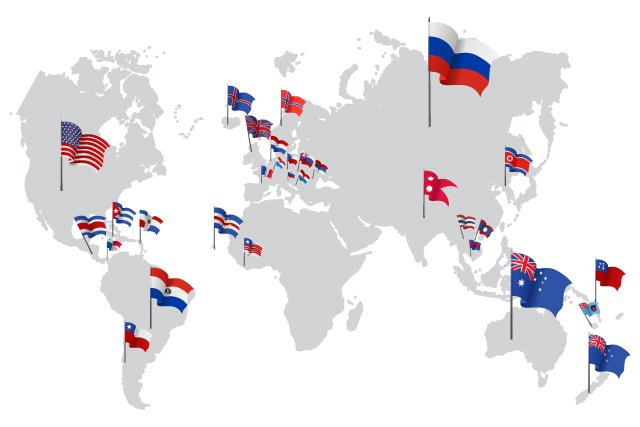
Embarking on a visual journey through nations that proudly bear the classic combination of red, white, and blue in their flags. A comprehensive exploration of the symbolism, intricate flag descriptions, and historical significance behind each country’s decision to adopt these enduring colors.
Red, White, and Blue Flags – Symbolism and Meaning
Embarking on a journey into the heart of flag symbolism, we find that the colors adorning these national emblems are more than mere visual elements—they are profound conveyors of history, culture, and collective identity. Let’s explore the nuanced significance behind each hue, unraveling the captivating stories woven into the very fabric of nations. Also, Discover our comprehensive guide to countries featuring flags in black, red, and yellow.
Red: red stands as a beacon of fervor and courage. It symbolizes the passion that courses through the veins of nations, often echoing the sacrifices made in the pursuit of independence. Red pulsates with the energy of revolutions, a vivid reminder of the resilience and determination that define a people’s quest for self-determination. It is the color of sacrifice, a visceral representation of the bloodshed on the arduous path to freedom.
White: White, a canvas of purity, transcends the visual palette to embody innocence, peace, and neutrality. It serves as an immaculate backdrop upon which a nation’s aspirations are painted. White’s symbolism extends beyond the visual; it represents the untarnished vision for the future and the collective pursuit of ideals that transcend worldly complexities. As the color of peace, white fosters tranquility and stands as a visual sanctuary against the tumult of conflict. It embodies neutrality and diplomacy, offering a blank slate where diverse elements can converge harmoniously.
Blue: Blue, a serene and contemplative hue, encapsulates stability, loyalty, and enduring perseverance. Inspired by the vastness of the sky and the boundless oceans, blue mirrors the inclusive embrace of diverse cultures within a nation. It symbolizes stability, reflecting the steadfast commitment to foundational principles. Blue is the color of loyalty, representing unbreakable bonds that tie individuals to their communities. As a visual metaphor for endurance, it echoes the collective determination to navigate challenges and emerge stronger on the other side.
Red, White And Blue Together in Flags
When red, white, and blue unite on a flag, they create a tapestry of unity and shared values. This combination often signifies a nation’s commitment to democracy, freedom, and the pursuit of a better future. The interconnectedness of these colors fosters a sense of national pride, evoking a collective spirit that transcends individual differences. Flags adorned with red, white, and blue become visual declarations of identity, resilience, and the enduring pursuit of ideals.
Flags of Red, White, and Blue
Now, let’s explore several countries that incorporate the colors Blue and Yellow into their public flags, showcasing the different interpretations of these colors.
1. Nepal

- Flag Description: A unique, non-rectangular shape adorned with crimson, blue, and white. Its unconventional design is a reflection of Nepal’s distinctive identity.
- Meaning: An embodiment of bravery, peace, and a visual ode to the towering peaks of Nepal.
- Time of Adoption: December 16, 1962.
2. Cuba

- Flag Description: Five horizontal stripes of blue and white with a red triangle and a solitary white star. Each element is meticulously placed to evoke Cuba’s revolutionary spirit.
- Meaning: The blue for the sky and sea, white for purity, red for the bloodshed, and the lone star represents freedom.
- Time of Adoption: May 20, 1849.
3. Chile

- Flag Description: Two horizontal bands of white and red, intersected by a blue square and a single white star. A composition that narrates Chile’s geographical and historical narrative.
- Meaning: White for the snow-covered Andes, blue for the vast skies, and red for the sacrifices made during the struggle for freedom.
- Time of Adoption: October 18, 1817.
4. Liberia

- Flag Description: Eleven horizontal stripes of alternating red and white, topped with a blue square featuring a lone white star. A vivid representation of Liberia’s unique historical journey.
- Meaning: The symbolism extends to freedom and the eleven founding fathers of Liberia.
- Time of Adoption: August 24, 1847.
5. North Korea

- Flag Description: A red rectangle, bordered by blue, encasing a white circle with a red five-pointed star. Every element aligns with the ideological tenets of North Korea.
- Meaning: Red for communism, white for purity, blue for sovereignty, and the star representing the leadership of the Workers’ Party.
- Time of Adoption: September 8, 1948.
6. United States
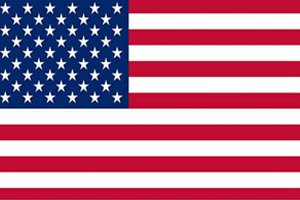
- Flag Description: Thirteen horizontal stripes of red and white, crowned with a field of fifty white stars on a blue backdrop. A symbol of enduring liberty and unity. Also, explore our guide to: What Is the Meaning of a Black and White American Flag.
- Meaning: Each stripe represents the original thirteen colonies, while the stars symbolize the states.
- Time of Adoption: June 14, 1777.
7. Laos
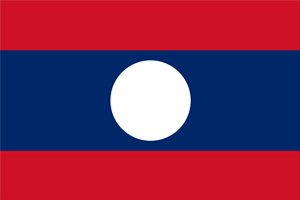
- Flag Description: Three horizontal stripes of red, white, and blue, with a white circle containing a yellow hammer and sickle. A composition echoing the nation’s political and ideological landscape.
- Meaning: Red for the bloodshed, white for purity, blue for wealth, and symbols portraying socialist principles.
- Time of Adoption: December 2, 1975.
8. Cabo Verde

- Flag Description: Three horizontal bands of blue, white, and red, adorned with a circle of ten yellow stars. A colorful portrayal of Cabo Verde’s geographical and historical essence.
- Meaning: Blue for the surrounding ocean, white for peace, red for the struggle for independence, and stars representing the ten primary islands.
- Time of Adoption: September 22, 1992.
9. Netherlands

- Flag Description: Three horizontal bands of red, white, and blue. A straightforward yet impactful representation of Dutch heritage.
- Meaning: Rooted in historical significance, embodying the traditional colors of the Dutch.
- Time of Adoption: February 19, 1937.
10. Thailand
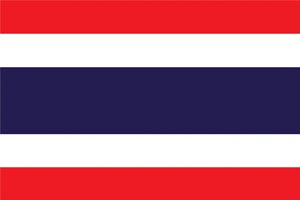
- Flag Description: Horizontal bands of red, white, and blue, with a central blue band twice as wide. A meticulously designed flag embodying Thailand’s cultural and spiritual values.
- Meaning: A representation of the nation, Buddhism, and the monarchy.
- Time of Adoption: September 28, 1917.
11. Russia
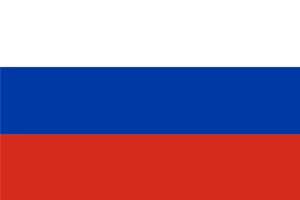
- Flag Description: Three horizontal bands of white, blue, and red. A flag that draws from Pan-Slavic colors, symbolizing Russia’s deep cultural roots.
- Meaning: Rooted in the country’s Slavic heritage, reflecting historical continuity.
- Time of Adoption: August 21, 1991.
12. Slovenia

- Flag Description: Three horizontal bands of white, blue, and red, accompanied by a coat of arms in the upper left corner. A flag reflecting Slovenia’s natural beauty and historical narratives.
- Meaning: Elements representing mountains, sea, and prosperity.
- Time of Adoption: June 27, 1991.
13. Paraguay
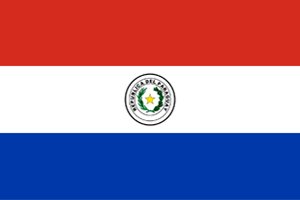
- Flag Description: Three horizontal bands of red, white, and blue, embellished with a central coat of arms. A flag that encapsulates Paraguay’s spirit of courage and unity.
- Meaning: Representing bravery, unity, and liberty.
- Time of Adoption: November 23, 1842.
14. Cambodia

- Flag Description: Horizontal bands of blue and red, centered around a white building. A flag intricately designed to reflect Cambodia’s architectural and historical heritage.
- Meaning: Depicting the iconic Angkor Wat temple and the nation’s past and future.
- Time of Adoption: June 29, 1993.
15. Luxembourg

- Flag Description: A horizontal tricolor of red, white, and blue. A flag that embodies the historical identity of Luxembourg.
- Meaning: A representation of the Grand Duchy of Luxembourg.
- Time of Adoption: June 23, 1972.
16. Costa Rica
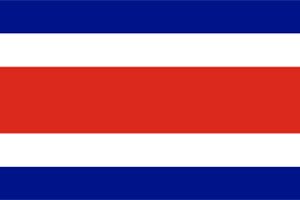
- Flag Description: Five horizontal bands of blue, white, and red, featuring a central coat of arms. A vibrant flag telling the tale of Costa Rica’s natural beauty and struggles for freedom.
- Meaning: Depicting the ocean, sky, warmth of the people, and the sacrifices made.
- Time of Adoption: November 27, 1906.
17. French

- Flag Description: A vertical tricolor of blue, white, and red. A flag synonymous with the principles of liberty, equality, and fraternity
- Meaning: Each color symbolizing a core principle of the French Republic.
- Time of Adoption: February 15, 1794.
18. Iceland

- Flag Description: A red cross on a blue background with white borders. A simple yet evocative design representing Iceland’s unique geography.
- Meaning: Depicting mountains, ocean, and sky, encapsulating the essence of Iceland.
- Time of Adoption: June 19, 1915.
19. Australia
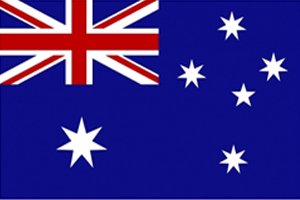
- Flag Description: Blue background with the Union Jack in the upper left corner and seven-pointed stars representing the Southern Cross. A flag entwined with Australia’s historical and geographical ties.
- Meaning: Representing the British Commonwealth and the Southern Hemisphere.
- Time of Adoption: September 3, 1901.
20. Samoa
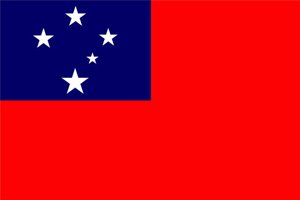
- Flag Description: Red background with a blue rectangle in the upper left corner, adorned with five white stars. A flag narrating Samoa’s celestial navigation.
- Meaning: Signifying navigation by the Southern Cross.
- Time of Adoption: February 24, 1949.
21. Czech Republic
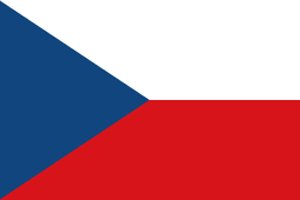
- Flag Description: Two horizontal bands of white and red, with a blue triangle extending from the hoist side. A flag commemorating the historical union of the Czechs and Slovaks.
- Meaning: Reflecting the unity of two nations.
- Time of Adoption: December 17, 1920.
22. Dominican Republic
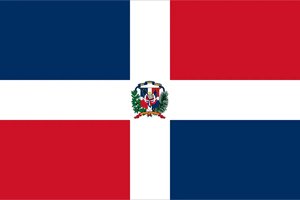
- Flag Description: Horizontal bands of blue, white, and red, featuring the national coat of arms. A flag resplendent with symbols of liberty, the people, and wealth.
- Meaning: Signifying liberty, the people, and the country’s prosperity.
- Time of Adoption: November 6, 1844.
23. Fiji
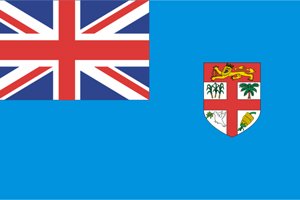
- Flag Description: Blue background with the Union Jack in the upper left corner and a shield with a red cross and blue ocean waves. A flag echoing Fiji’s historical connection to the British Empire and its maritime setting.
- Meaning: Representing historical ties and oceanic geography.
- Time of Adoption: October 10, 1970.
24. Panama
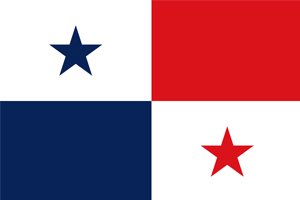
- Flag Description: Four quadrants of red and blue, with two white rectangles containing stars. A flag reflecting Panama’s political landscape and its strategic geographical position.
- Meaning: Depicting political parties and the sea-to-sea position.
- Time of Adoption: November 4, 1903.
25. Croatia

- Flag Description: Horizontal bands of red, white, and blue, accompanied by the national coat of arms. A flag seamlessly blending history and unity.
- Meaning: Representing Croatia’s historical narrative and national unity.
- Time of Adoption: December 21, 1990.
26. United Kingdom

- Flag Description: The Union Jack, a combination of the flags of England, Scotland, and Ireland. A flag steeped in political union and historical continuity.
- Meaning: Representing the political union of three nations.
- Time of Adoption: January 1, 1801.
27. Serbia
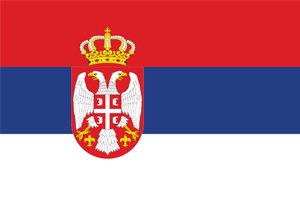
- Flag Description: Horizontal bands of red, blue, and white. A flag reflecting Serbia’s tricolor and historical essence.
- Meaning: Depicting the national colors and historical legacy.
- Time of Adoption: August 16, 2004.
28. New Zealand
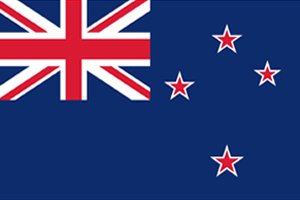
- Flag Description: Blue background with the Southern Cross and the Union Jack in the upper left corner. A flag encapsulating New Zealand’s geographical location and ties to the British Empire.
- Meaning: Representing geographical location and historical connections.
- Time of Adoption: March 24, 1902.
29. Slovakia

- Flag Description: Horizontal bands of white, blue, and red, accompanied by a coat of arms. A flag harmonizing national colors and historical elements.
- Meaning: Reflecting the national identity and historical narratives.
- Time of Adoption: September 1, 1992.
30. Norway

- Flag Description: Red background with a blue cross outlined in white. A flag embodying Norway’s Christian heritage and enduring independence.
- Meaning: Signifying Christian heritage and national independence.
- Time of Adoption: July 17, 1821.
Read More: Countries with Red, Green, White, and Black Flag
Conclusion
A vivid tapestry of flags, each intricately woven with the unique stories, history, and aspirations of the nations they represent. The enduring combination of red, white, and blue serving as a common thread, symbolizing courage, purity, and the relentless pursuit of freedom across diverse cultures and geographies.








